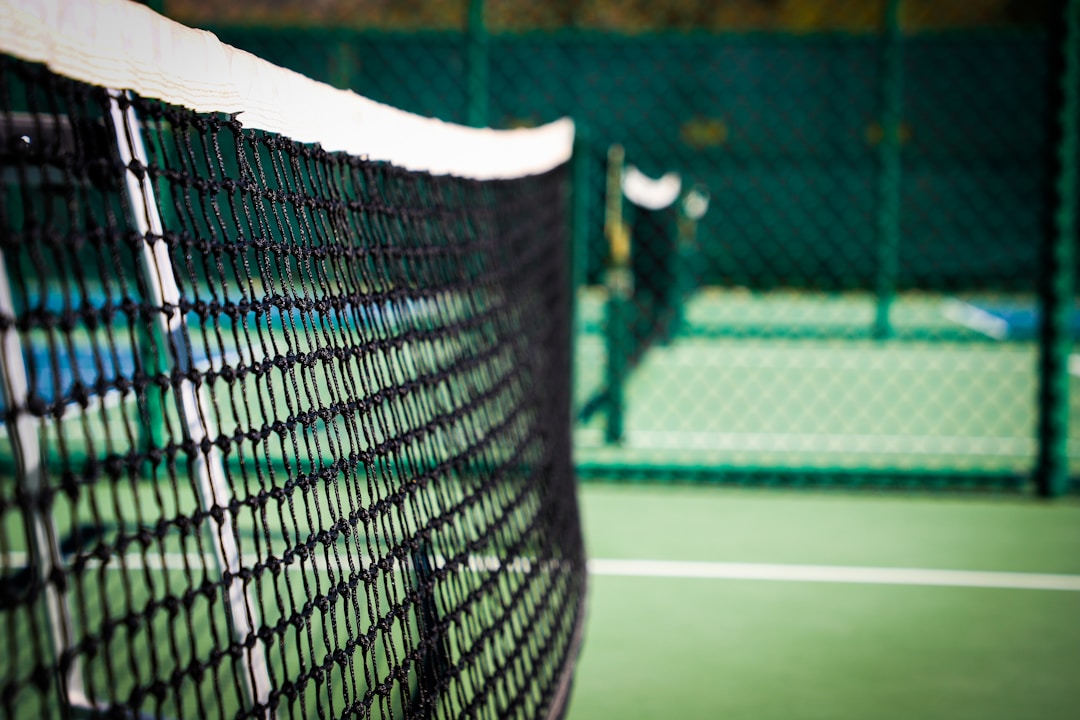
Master the Court: 10 Essential Skills Every Pickleball Player Should Learn
Share
Pickleball is more than just a game; it’s a lifestyle that combines strategy, athleticism, and a touch of humor. As the sport continues to gain popularity across the United States, it’s essential for players to master specific skills to enhance their gameplay and enjoy the community around them. Whether you’re a novice picking up a paddle for the first time or a seasoned player looking to sharpen your technique, these essential pickleball skills will elevate your game and make it even more enjoyable.
1. Understanding the Basic Rules of Pickleball
Before diving into the skills, it's crucial to have a firm grasp of the game’s fundamental rules. Knowing how to serve, score, and the proper court dimensions are the cornerstones of becoming a competent pickleball player. Here are a few key rules to remember:
-
Serving: A point of contention with it's rules constantly changing. As of the September 13th, 2024 the official rule as of September 13th, 2024(though its a 60 day trial):
- The ball must be released downward from the waist area. A drop from the hand may not be tossed upwards but can incur minimal and natural lift (up to one ball length).
- The swing on the serve must be underhand (around 45 degrees or less) and the paddle must clearly travel in a low to high direction.
- Serves where either the ball is tossed too high on the release or the swing was not clearly in a low to high motion will first result in a service warning and re-serve. Each player is allowed one service warning per match. Subsequent violations will result in a fault.
- Scoring: Only the serving side can score points. The game is typically played to 11, 15, or 21 points.
- No-Volley Zone (Kitchen): The area seven feet from the net on both sides is known, officially, as the no-volley zone, an unofficially, "The Kitchen." Players cannot hit the before it bounces standing in this region. That is to say, you are not allowed to volley (hitting a ball before it has bounced) if you are standing in the kitchen, or on it's lines.
2. Developing Strong Serving Skills
The serve in pickleball is often the first opportunity to establish control over the game. A good serve can put your opponent on the defensive right from the start. Players should practice different types of serves, such as:
Flat Serve
This is a straightforward serve aimed at speed and aggression, allowing you to gain an advantage quickly.
Topspin Serve
This serve bounces higher and can confuse opponents, making it difficult for them to return effectively. This requires you to come over the ball similar to a windshield wiper, being sure to maintain having your paddle had lower than your wrist at the point of contact.
Slice Serve
Utilizing finesse, this serve is often unexpected and can result in easy points. This one is more tricky as you can come dangerously close to having an illegal serve. Just remember to start low, making it clear your paddle head is lower than your wrist and aim for the the bottom outside of the ball.
Experimenting with various serving techniques will help you find what works best for your style, and you can flaunt that skill in your favorite pickleball shirts as you dominate on the court!
3. Mastering the Forehand and Backhand Strokes
The ability to hit strong forehand and backhand shots is essential in maintaining consistent rallies. Focus on the following techniques:
Forehand Stroke
- Keep your paddle high and prepare early.
- drop the paddle head as if you petting a dog behind you.
- As the ball hits the ground transfer your weight from your back foot to your front foot striking the ball as it's on its way up.
- Follow through, extending towards your target to ensure a smooth, controlled, and powerful shot.
- Do it over and over again.
Backhand Stroke
- Utilize either a one-handed or two-handed grip based on your comfort. It is important to understand that grip, are too some extent in the hand of the beholder.
- Position yourself sideways to the net to generate more power.
- Focus on body positioning and balance as you hit the ball.
Regular practice of these strokes will aid in building confidence and consistency, important aspects of a proficient pickleball player!
4. Footwork and Positioning
Excellent footwork is vital in pickleball, as it allows you to adjust your position quickly, hitting the ball effectively while maintaining balance. Key aspects to focus on include:
- Quick Lateral Movements: Being able to move side to side rapidly is crucial since the ball can come from various angles.
- Proper Stance: A slightly bent knee stance prepares your body for movement and helps lower your center of gravity.
- Anticipation: Reading your opponent’s body language can help you predict where the ball will go.
By improving your footwork, you can cover the court more effectively, and soon enough, your skills will shine while sporting your favorite funny pickleball shirts!
5. Learning the Art of Dinking
Dinking is a crucial skill, particularly in doubles play. It involves hitting the ball softly and accurately over the net to land in your opponent's no-volley zone. Here are some tips to enhance your dinking skills:
- Keep your paddle angled slightly upward for better control.
- Utilize a soft grip to minimize power while maintaining finesse.
- Practice your positioning, ensuring you remain at the proper distance from the net.
Mastering this skill will not only frustrate your opponents but also open up opportunities for winning shots!
6. Effective Communication in Doubles Play
If you're part of a doubles team, effective communication is the backbone of your success. Here’s how to promote better teamwork:
- Call Your Shots: Always let your partner know when you’re going for the ball.
- Establish Roles: Know who will take the lead at the net and who will cover the backline.
- Encourage One Another: Positive reinforcement will enhance your team's morale.
Proper communication leads to improved synergy on the court and can be the difference between winning and losing!
7. Anticipating Opponent’s Shots
Being able to read your opponent’s cues can give you the upper hand. Pay close attention to:
- Their body positioning and footwork.
- Racquet angle when preparing to hit the ball.
- Patterns in their gameplay that can reveal their next move.
As you become more perceptive to your opponent’s tactics, you'll find it much easier to anticipate their shots and respond accordingly.
8. Building a Solid Mental Game
Pickleball is as much a mental game as it is a physical one. Developing strong mental resilience is crucial for maintaining composure during matches. Here are some tips to mental fortitude:
- Visualization: Picture yourself executing successful shots or strategies before the match. One of the most common thing top athletes say right after they win championships is that they visualized themselves winning it.
- Stay Positive: Embrace a positive mindset, even in the face of challenges or mistakes. Studies have shown that the thing that separates the top 5 tennis players in the world from the rest of the field is the seconds after they miss a shot, and their ability to move onto the positive, and not dwell on the negative.
- Focus on the Present: Concentrate on each point individually. If you dwell on past points, or look foward to one still to play, it takes out of the present, shifting your focus away from where it needs to be.
A robust mental game will greatly enhance your performance on the court, making it easier to navigate challenging situations.
9. Choosing the Right Gear
Having the right equipment can make a big difference in your performance. Here are some essential items every pickleball player should consider:
- Pickleball Paddle: Choose a paddle that best fits your playing style, whether you prefer a lightweight or heavier one.
- Pickleball Balls: Familiarize yourself with different types of balls as they can impact your play.
- Pickleball Shoes: Invest in shoes that offer support and grip, as you'll be moving around a lot on the court.
Don’t forget to also express your pickleball enthusiasm through stylish pickleball t shirts near me options or fun accessories that reflect your personality!
10. Join the Pickleball Community
Finally, becoming a part of the vibrant pickleball community is essential. Whether you are attending local meetups, joining clubs, or participating in tournaments, connecting with fellow players will enhance your skills and enjoyment of the game.
- Networking: Building relationships with other enthusiasts can provide helpful tips and mentorship opportunities.
- Learning from Others: Observing different gameplay styles and strategies will help you improve your own skills. And show you where the game is going in the future.
- Community Events: Participate in local events or fundraisers; they’re fun, and you’ll meet new people!
Engaging in the community not only enhances your understanding of the game but will also lead you to discover unique pickleball gifts for players of all skill levels!
Ready to Elevate Your Pickleball Game?
By focusing on these essential skills, you are well on your way to becoming a more competent and confident pickleball player. Remember, practice makes perfect, and the more time you dedicate to developing these skills, the more enjoyable the game will become.
So gear up, put on your favorite pickleball shirts, and hit the courts prepared to impress your friends and opponents alike!
